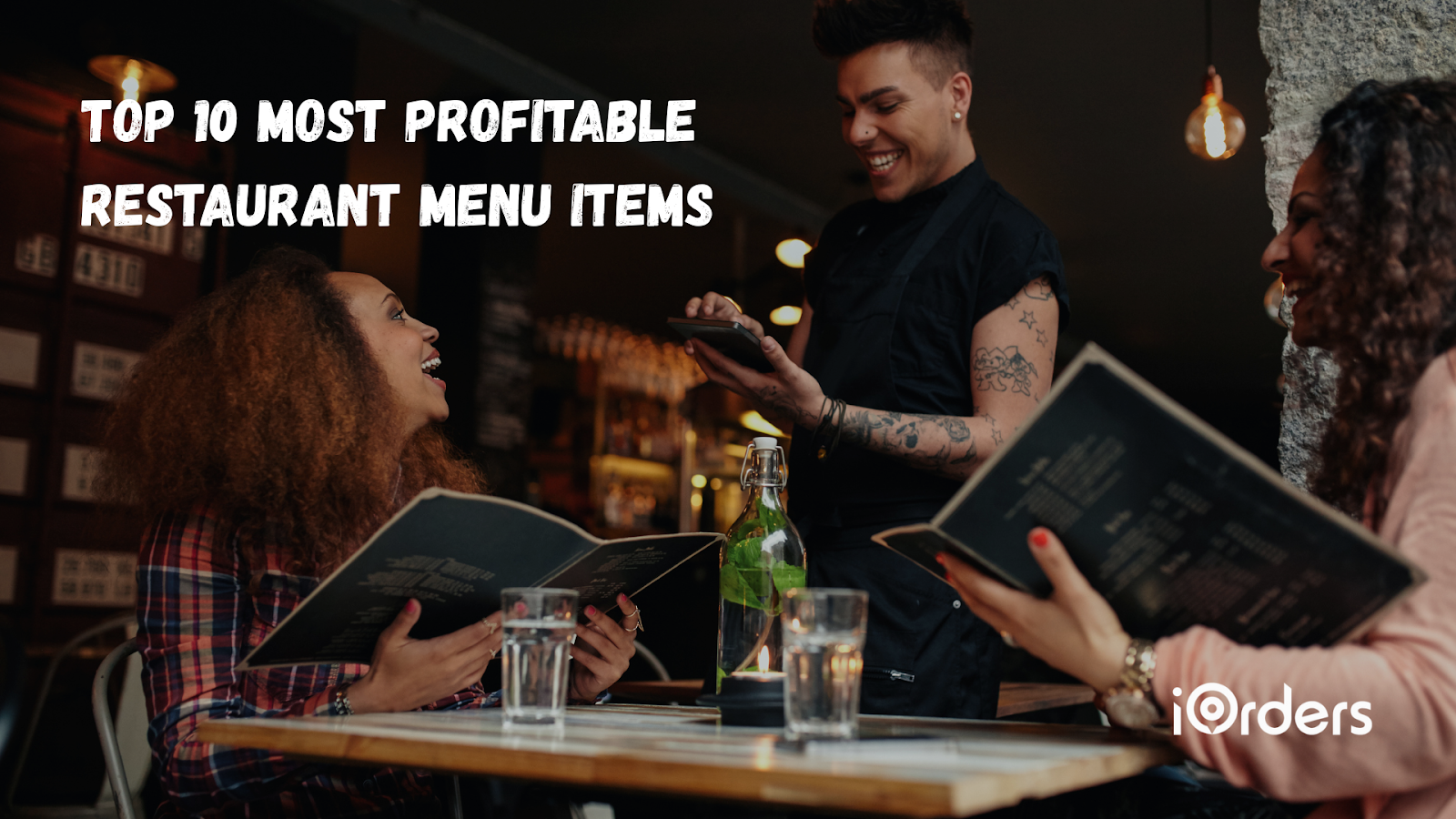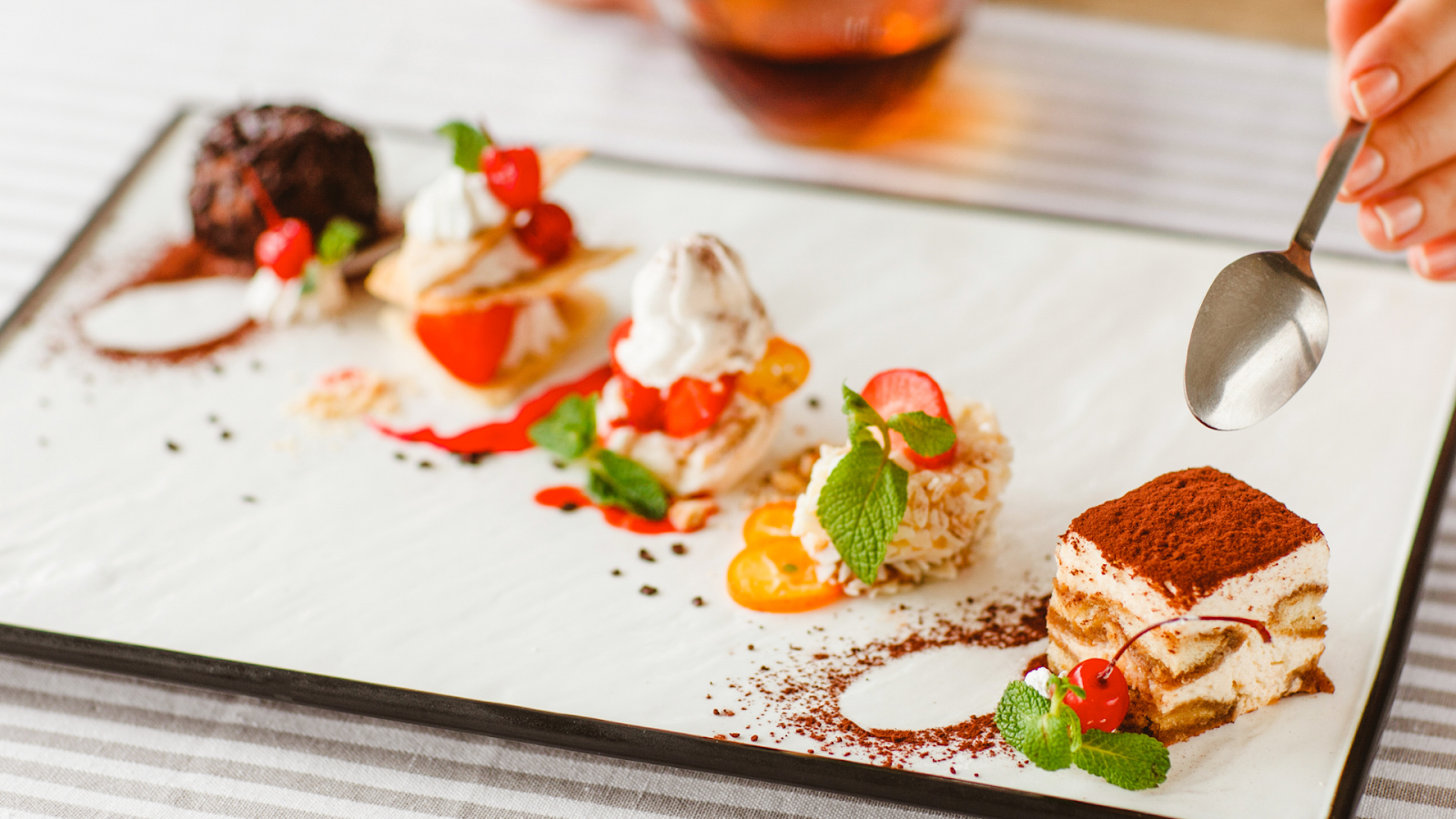July 10, 2025

In the competitive world of restaurants, profitability isn't just about high sales; it's about smart strategy, and nowhere is this more evident than in your menu. A thoughtfully engineered menu can directly impact your bottom line, while an unoptimized one can quietly drain your potential earnings.
According to Menu Cover Depot, implementing effective menu engineering strategies can increase profitability by 10% to 15%. Beyond raising prices, it involves a scientific approach to analyzing item costs, popularity, and pricing to make informed decisions.
This guide is your blueprint to maximizing your restaurant's financial performance. We'll unveil the top 10 most profitable menu items for 2025 and provide actionable strategies to integrate them. Let's ensure your menu isn't just a list of dishes but a powerful tool for enhanced revenue and sustained success.
Amidst rising ingredient costs and labor expenses, identifying and prioritizing high-margin dishes is more crucial than ever. Focusing on profitable menu items means you're maximizing the return on every plate you serve. It's about making deliberate, data-informed decisions that strengthen your financial results.
The key considerations for selecting profitable dishes boil down to three things: cost of ingredients, appropriate pricing that reflects value and demand, and strategies to minimize food waste. By mastering these, you can ensure your offerings appeal to customers while significantly boosting your bottom line.
Now, it's time to take a closer look at the most profitable menu items for 2025.
Also Read: Innovative Restaurant Revenue Streams to Boost Profits

The restaurant industry continues its robust growth, projected to hit a record $1.5 trillion in sales in the U.S. in 2025, according to the National Restaurant Association. So, strategically selecting menu items with high margins is key. These items combine high demand with efficient production and excellent pricing flexibility.
Here are the top 10 dishes that consistently deliver strong profits:
Burgers remain a powerhouse of profitability. Their appeal is universal, and their core ingredients (buns, patties, basic toppings) are relatively inexpensive. This allows for significant markups, especially when you offer gourmet options.
Pizzas are a profit marvel due to their low base cost and incredible versatility. Dough, sauce, and cheese are economical when bought in bulk, providing a strong foundation for high-margin sales.
Pasta dishes are incredibly profitable due to their low ingredient cost and high perceived value. Basic pasta and sauce are cheap to purchase, but adding a protein or premium sauce significantly increases the selling price.
Beverages, especially coffee and tea, boast some of the highest markups in the industry. The cost of raw ingredients is minimal compared to the retail price, particularly for specialty drinks.
Items like fries, onion rings, and fried pickles are simple to make, widely popular, and have exceptionally low food costs. They are perfect for generating quick, high-margin sales as sides or appetizers.
These indulgent drinks, whether non-alcoholic shakes or refreshing cocktails like mojitos, offer fantastic profit margins due to their high perceived value and often simple, low-cost base ingredients.
Brunch has exploded in popularity, and items like avocado toast, egg dishes, and specialty pancakes or waffles offer excellent profitability. They often use common, affordable ingredients but have a high perceived value.
Soups and stews are budget-friendly powerhouses. They can effectively utilize seasonal or leftover ingredients, significantly reducing food waste and costs. They offer comfort and can be priced affordably yet yield high margins.
Salads have evolved from simple sides to profitable main courses, driven by the demand for healthy, customizable meals. Adding protein elevates their value and price point.
Grilled seafood dishes like lobster tails, shrimp skewers, and fish fillets have a high perceived value in the minds of diners, allowing for significant markups despite sometimes higher ingredient costs. Their healthy appeal also attracts a strong customer base.
Implementing these practices consistently allows your restaurant to stay competitive and adapt to changing customer preferences.
Now, let's understand how menu engineering helps you sell more of these items.
Also Read: Restaurant Marketing Strategies and Ideas for 2025

Knowing which items are profitable is just one part of the equation; how you present and manage them is equally vital. Menu engineering is the art and science of analyzing and optimizing your menu to boost profitability systematically. It's about making data-informed decisions based on each dish's performance, from cost to popularity.
Here's how to apply these principles:
The foundation of menu engineering is knowing the exact cost of every dish, including ingredients, preparation, and even a portion of labor. This helps you understand its true profitability. Without this, you're just guessing.
Classify each dish into one of four categories based on its popularity and profitability:
Your menu's physical design can subtly guide customers toward profitable choices:
An informed and enthusiastic staff can significantly impact your bottom line. Train your team on the profitability of each item, the best upsell opportunities (e.g., suggesting a premium topping for a pizza, or a specialty drink with a burger), and descriptive language to enhance their recommendations.
Menu optimization isn't a one-time task; it's an ongoing process. Regularly test different configurations, promotions, and pricing strategies. Continually analyze performance data and gather customer feedback to make informed adjustments.
Now that you've grasped the fundamentals of menu engineering, let's look into creative concepts that not only boost revenue but also captivate your customers and keep them coming back for more.
Also Read: Restaurant SOPs: Implementation Guide and Free Templates

In a highly competitive dining industry, restaurants need to keep innovating to attract customers and boost profits. Here are five creative menu strategies, with real-world examples, to inspire your restaurant's next step.
Cheese boards have become a popular menu item, offering a shareable and customizable choice that appeals to a broad range of customers. They deliver high-profit margins because of their low food costs and versatility.
Restaurants can feature various cheeses, meats, fruits, and accompaniments to craft a unique dining experience.
Example: The Church Brewing Co. offers a selection of signature sauces that can complement cheese boards, enhancing the overall dining experience.
Seasonal menus allow restaurants to capitalize on fresh, in-season ingredients, reducing costs and increasing flavor profiles. By rotating dishes based on the time of year, restaurants can keep their offerings exciting and aligned with customer expectations.
Example: Favorite Neighbor, a European-inspired restaurant in New Braunfels, Texas, plans to offer scratch-made tapas and sandwiches on house-baked bread, featuring seasonal ingredients to create a cozy, neighborhood-style ambiance.
Developing unique sauces and dips can set a restaurant apart from competitors and encourage repeat business. Signature sauces add a personal touch and can be marketed as a special feature of the menu.
Example: Schlotzsky's is known for its distinctive signature sauce, which has become a defining element of their brand.
Chicken wings remain a popular and profitable menu item due to their versatility and high demand. Offering a variety of flavors and preparations can attract a broad customer base. Restaurants can experiment with different sauces, cooking methods, and presentations to create unique wing offerings.
Example: Panago Pizza launched the Hot Honey Brooklyn Pepperoni Pizza, featuring layers of pepperoni, mozzarella, and cheddar, topped with a hot honey drizzle, showcasing the popularity of bold flavors in menu items.
Introducing unique and creative menu items can generate buzz and attract customers seeking new dining experiences. These items can range from innovative takes on classic dishes to entirely new creations.
Example: Side A, a new San Francisco restaurant, offers inventive dishes like Italian beef short rib gnocchi and a lavish chicken cutlet bathed in honey mustard, embracing a maximalist culinary style that combines bold, whimsical flavor fusions with refined technique.
Implementing these innovative menu ideas can significantly enhance your restaurant's appeal and profitability. However, to maximize the impact of these offerings, it's essential to utilize technology effectively.
Next, let's understand how iOrders can assist in optimizing your menu engineering efforts.
Also Read: Expert Insights on Food Trends 2025

Menu engineering is crucial, but implementing these strategies can be challenging without the right tools. iOrders offers a range of features that streamline the process of menu optimization and boost restaurant revenue, allowing you to manage your menus, analyze sales data, implement marketing strategies, and much more, all from a single platform.
Here's how iOrders can supercharge your menu engineering efforts:
One of the main challenges for restaurants is maintaining the consistency of their menu across different platforms, from in-house menus to online ordering systems and delivery apps.
iOrders enables real-time menu updates, instantly reflecting changes like new dishes, prices, or seasonal items. It prevents confusion, reduces errors, and ensures customers see the latest offerings.
Understanding which menu items perform well and which don't is essential for making informed decisions. iOrders integrates with your POS system and gathers valuable data on sales, customer preferences, and purchasing patterns from sources like the website, online ordering system, and white-label mobile app.
With this data, you can analyze your menu's performance, identify top-selling items, and pinpoint dishes that may need adjustments or removal. By using data-driven insights, restaurants can optimize their menu for maximum profitability.
iOrders offers powerful marketing tools that help you promote high-margin, underperforming, or seasonal menu items. With smart campaigns, you can create personalized promotions that target specific customer segments based on their preferences or purchase history.
Whether it's sending out an email blast about a new dish or running a special promotion for a limited-time menu item, iOrders enables you to engage with your customers in a meaningful way, encouraging them to try profitable dishes and increasing sales.
Retaining customers is just as important as attracting new ones. iOrders' customized loyalty programs allow restaurants to create tailored rewards that encourage repeat visits.
By offering loyalty points or rewards for high-margin items, restaurants can boost sales and customer loyalty. Loyalty programs also gather customer data to customize marketing and menu options.
Customer feedback is invaluable for improving your menu, but manually sifting through reviews can be time-consuming. iOrders' AI-powered review system helps automate the process by generating personalized responses to customer reviews and feedback.
This system analyzes customer comments' sentiment and offers insights. It helps you understand preferences, whether customers love your seasonal soup or have dish suggestions, so that you can adjust your menu.
Menu engineering isn't just about listing dishes; it's about strategically designing your menu to boost profitability. Analyzing costs, pricing, and preferences helps develop a menu that maximizes revenue, reduces waste, and encourages repeat visits. A data-driven, right menu can significantly impact your restaurant's success.
With iOrders, simplifying the menu engineering process has never been easier. From real-time updates and data analysis to smart marketing campaigns and AI-powered reviews, it equips you with all the tools you need to optimize your menu and boost profitability effortlessly.
Ready to take your restaurant's profitability to the next level? Contact iOrders today and discover how our platform can help streamline your menu engineering and drive success.